The Occupation of Paris during World War II was a turbulent and trying period in the city’s history. From 1940 to 1944, Parisians faced harsh realities, including severe food shortages, strict curfews, and the ever-present threat of arrest, particularly for the Jewish population. Despite the oppressive environment, a spirit of resistance emerged, leading to strikes and underground operations. As the Allies approached, the city’s liberation on August 19, 1944, marked a turning point, but the scars and memories of this dark chapter linger on.
Key Points
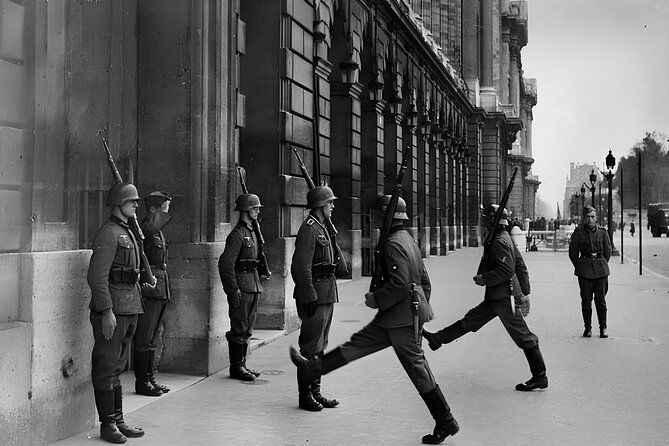
- The German occupation of Paris lasted from 1940 to 1944, marked by harsh realities like food shortages, curfews, and the persecution of the Jewish population.
- The darkest period from 1942-1943 saw Gestapo raids, mass arrests, and deportations, but the Parisian spirit of resistance remained unbroken.
- The liberation of Paris on August 21, 1944, by Allied forces led by General Leclerc, was celebrated by Parisians as the end of the occupation.
- The aftermath of the liberation left visible scars, with bullet-riddled buildings and memorials honoring the sacrifices of those who resisted.
- The occupation of Paris during World War II profoundly shaped the city’s history, influencing its legacy and contemporary fabric.
The Occupation of Paris
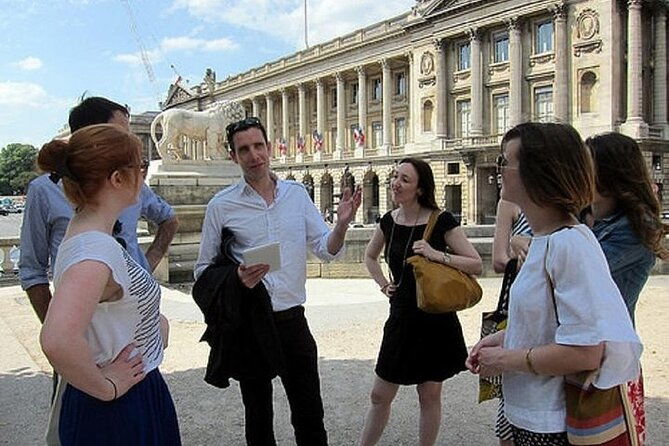
The German occupation of Paris during World War II was a complex and multifaceted period that profoundly shaped the city’s history.
From 1940 to 1944, Paris lived under the harsh realities of Nazi rule. Parisians faced food shortages, curfews, and the constant threat of arrest or deportation. The city’s Jewish population endured horrific persecution, with thousands sent to concentration camps.
Paris under Nazi occupation from 1940 to 1944 was marked by food shortages, curfews, and the persecution of the city’s Jewish population.
Despite this, Parisians resisted in various ways, from strikes to underground operations.
The occupation finally ended in 1944 with the Liberation of Paris, a pivotal moment that marked the city’s hard-fought triumph over oppression.
Looking for more options in Paris? We've reviewed plenty of other experiences.
The Darkest Days of the War
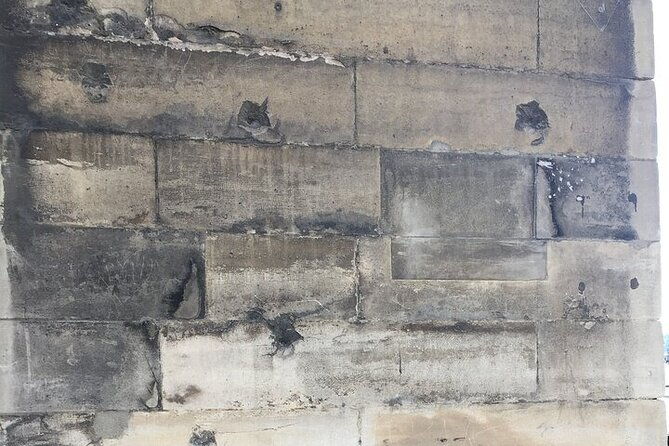
Following the hardships of the German occupation, Paris experienced its darkest days during the years of 1942 and 1943.
Gestapo raids, deportations, and executions were commonplace. Thousands of Parisians were arrested and sent to concentration camps. Jews were forced to wear yellow stars, and their businesses were seized. Ration lines grew longer, and food shortages became severe.
Parisian streets were tense and somber, with the ever-present fear of Nazi reprisals. Despite this, the city’s spirit of resistance remained unbroken. Parisians found ways to defy the occupiers, forming underground networks and participating in acts of sabotage.
These were the darkest days, but the light of liberation was on the horizon.
The Liberation of the City
As the tide of the war began to turn against the Germans, the long-awaited liberation of Paris drew ever closer.
On August 19, 1944, the French Resistance rose up and seized control of strategic locations across the city.
Two days later, Allied forces led by General Leclerc’s 2nd Armored Division entered Paris, encountering little resistance.
Jubilant Parisians poured into the streets, cheering and celebrating the end of the Occupation.
Over the following days, the Germans were pushed out, and the tricolor flag once again flew over the capital.
Paris had been liberated, restoring hope and pride to the French people.
Uncovering the Ghosts of the Past
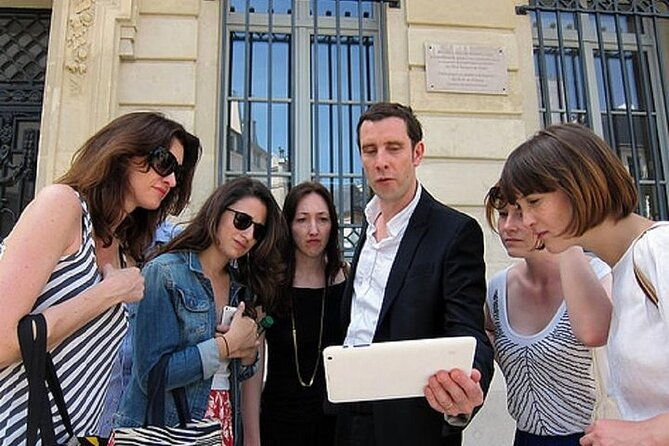
Though the joy of liberation had swept through the streets of Paris, the scars of the Occupation remained.
Bullet holes pockmarked building facades, serving as haunting reminders of the violence and conflict that had plagued the city.
Memorials and plaques dotted the landscape, honoring the sacrifices of those who had resisted the Nazi regime.
For the residents of Paris, each street corner and landmark carried the weight of history, the ghosts of the past forever etched into the fabric of the city.
Uncovering these remnants of a tumultuous era became a somber yet necessary part of the city’s healing process.
Frequently Asked Questions
- Champagne Day Trip With 6 Tastings, Reims and Winery From Paris
- Paris Montmartre Walking Tour Best Art Culture and Food
- Eiffel Tower Reserved Access Summit or 2nd Floor Guided by Lift
- Normandy D-Day Small-Group Day Trip With Omaha Beach, Cemetery & Cider Tasting
- From Paris: Versailles Full Day Bike Tour With Royal Gardens
- Paris Local Districts and Stories Off the Beaten Track Guided Bike Tour
What Is the Total Duration of the Tour?
The tour details do not specify the total duration of the experience. The information provided focuses on the meeting and end points, accessibility, cancellation policy, and reviews, but does not mention the length of the tour.
Is There a Discount for Students or Seniors?
The tour details do not mention any discounts for students or seniors. The price listed is a flat rate of €90.00 per person, without any indication of reduced pricing for specific groups.
Can the Tour Be Customized for Private Groups?
The tour can accommodate private group bookings. Group size is limited to a maximum of 10 travelers, and customization options may be available upon request. Pricing and availability for private groups may differ from the standard tour details.
Are Audio Guides Available During the Tour?
Audio guides are not mentioned as part of the tour details. The tour is led by a live guide for a maximum group size of 10 travelers. No information is provided about the availability of any audio guide option.
Can the Meeting or End Point Be Changed Upon Request?
The meeting and end points cannot be changed upon request. The tour has a fixed itinerary with designated pickup and drop-off locations to ensure a seamless and organized experience for all participants.
The Sum Up
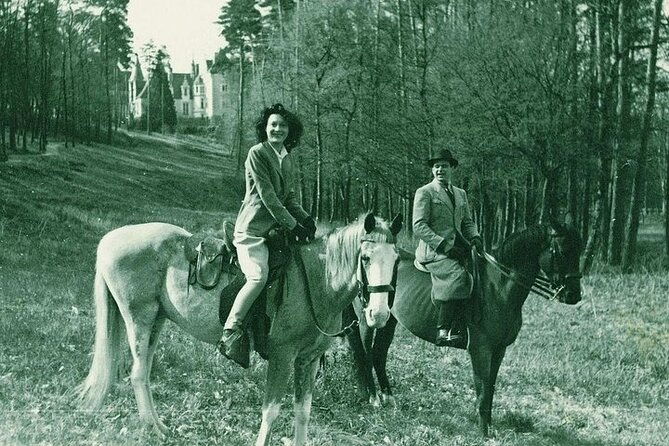
The Occupation of Paris during World War II left an indelible mark on the city. The hardships endured by its citizens, the persistent threat of violence, and the ultimate liberation symbolized the resilience of the Parisian spirit. Though the scars of the past remain, the city has emerged stronger, forever shaped by the defining events that unfolded within its streets.
More Dining Experiences in Paris
- Paris: Immersive Fine Dining Meets Art in an Ancient Cinema
- French Gourmet Cuisine: Dinner and Wine Pairing
- Paris Theo Boat Seine River Italian Trattoria Style Dinner Cruise
- Paris Moulin Rouge Dinner Show
- Paris Late Lunch at Eiffel Tower’s Madame Brasserie Restaurant
- Eiffel Tower Dinner Experience and Sightseeing Seine River Cruise
More Boat Tours & Cruises in Paris
- Bruges Highlights, Boat, Beer, Chocolate Day trip from Paris
- Paris Le Marais Hidden Gems Small Group Tour with Cruise Option
- Paris Evening Bike Tour with 1-hour Seine River Cruise
- Paris Covered Passages Walking Tour plus Seine Cruise Option
- Paris City Tour by Coach with Sightseeing Seine River Cruise
- Paris Private Night Tour with River Cruise and Champagne Option
More Tour Reviews in Paris
- Paris: Complete Historical & Cultural Immersion (2 Days)
- Paris Day Trip with Eurostar and Hop-On Hop-Off Bus
- Paris Montmartre & Sacre Coeur Semi-Private Guided Tour 12pp
- Europe: Train of Thoughts A Philosophical Journey on Rails
- Paris: Immersive Fine Dining Meets Art in an Ancient Cinema
- Bruges Highlights, Boat, Beer, Chocolate Day trip from Paris
Still browsing? Here are more Paris experiences we've covered recently
- Which Paris Workshops & Classes To Choose? We Rank The 14 Best
- The 11 Most Popular Full-Day Tours In Paris
- Paris’s 14 Best Wine Tours: Which To Choose?
- Which Paris Historical Tours To Choose? Our Best 14 Picks
- Paris’s 14 Top Tours (With Prices)
- Our 14 Favorite Paris Tours & Experiences
- The 14 Best Walking Tours In Paris
- Paris’s 10 Top Lunch Experiences (With Prices)
- 7 Best Cooking Classes In Paris
- The 8 Best Drinking Tours In Paris
- Our 5 Favorite Paris Shopping & Market Tours
- Paris’s 14 Top Photography Experiences
